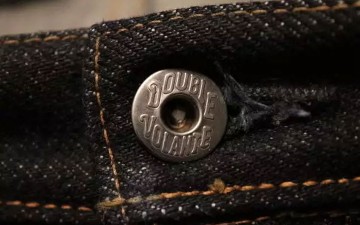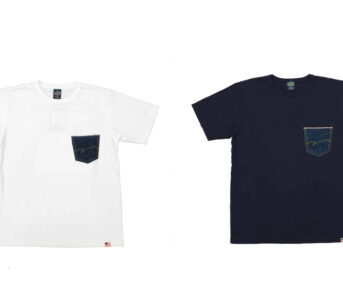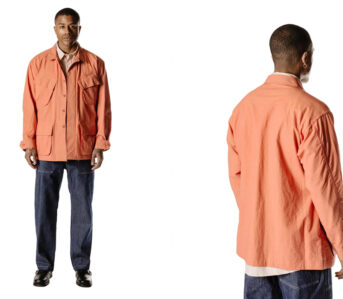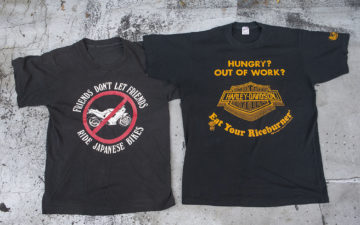Long and short-term readers of Heddels will be acquainted with Sugar Cane. Sitting as the jewel in the Toyo Enterprise crown, Sugar Cane is one of the most successful and iconic denim and heritage labels in Japan, producing a range of top-quality reproductions of vintage garb that are appreciated across the globe.
We caught up with Sugar Cane director Fukutomi San to chat about vintage garb, deadstock Cone denim, and more.
James: Thanks for taking the time to speak with me, Fukutomi San. How are you doing?
Fukutomi San: Thank you very much, James. From the development of new designs to the production of standard items, I’ve been busy lately. Recently, we’ve received a lot of inquiries from overseas and I’m happy that there are more young Sugar Cane customers than ever before.
F: I joined Toyo Enterprise in 1993, so I’ve worked there for over 30 years. When I joined the company, there was no internet or mobile phones. Communication with the factory was by landline or facsimile, and we use paper patterns for all Toyo Products
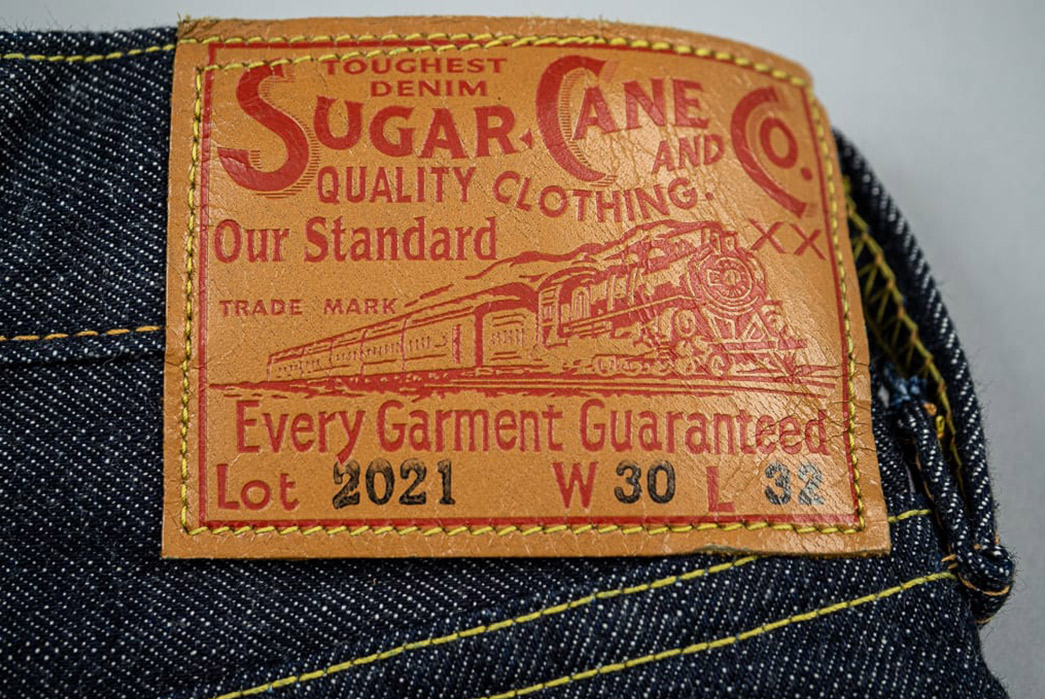
Image via Redcast Heritage.
It’s been about 15 years since I became the brand director of Sugar Cane. I started working in the denim industry because I had learned how to make tailor-made patterns and hand-sew as a student. I was attracted to the specifications of industrially produced products, such as double-needle sewing, chain stitching, and branding, and wanted to make clothes in this way.
J: When did you personally first start paying attention to vintage Americana style? Why does it excite you?
F: I started going to second-hand clothing stores as a student in the late 1980s and early 1990s, in the US, near my school in Daikanyama, Shibuya, and Harajuku. I started by buying vintage items, as I find beauty in the signs of aging and historic aura that can’t be found on new products. In addition to the sewing specifications and parts, American items had the name and lot number on their labels, making it easy to get used to them compared to vintage from other countries. I even grew to love the smell of old clothes.
F: Other than denim goods, my favorites are workwear coats, pants, and work shirts. I like these with their unique pre-WWII details. Since the 1930s, various work shirt makers have designed and patented original details. The chest pocket is especially unique, and the shape from each manufacturer — such as Big Yank, Uncle Sam, and Roomy Richard — is different. I also love U.S. Air Force flight jackets, especially the transition from B-15 to MA-1.
J: What is your most prized piece of vintage clothing in your own personal collection?
F: Sorry, I can’t narrow it down to just one. However, I am careful not to deteriorate my deadstock and mint-condition vintage pieces. Vintage items around here are rarely found in new condition these days, and prices have risen.
J: One of my personal favorite vintage Americana styles is the Wool Sports Jacket silhouette from the 1930s and 1940s, and I believe Sugar Cane makes one of the most attractive reproductions of this style. Can you share your knowledge of the history of this silhouette? There isn’t much information out there about this style – how and why it was designed, who made them in the 1930s and 40s, etc.
I don’t know which brand was first, but both wool sports jackets and leather sports jackets have evolved in roughly the same way. During the Great Depression in the early 1930s, the majority of jackets were Cossack-style jackets with button fronts, around 25 inches in length, belts and tabs for adjustment, and waist or hem attachments. In the latter half of the 1930s, Talon and Hookless eyelet open-end zipper jackets were sold by famous workwear brands and woolen fabric makers, as well as mail orders from Sears Roebuck, Montgomery Ward, J.C.Penny, and Spiegel.
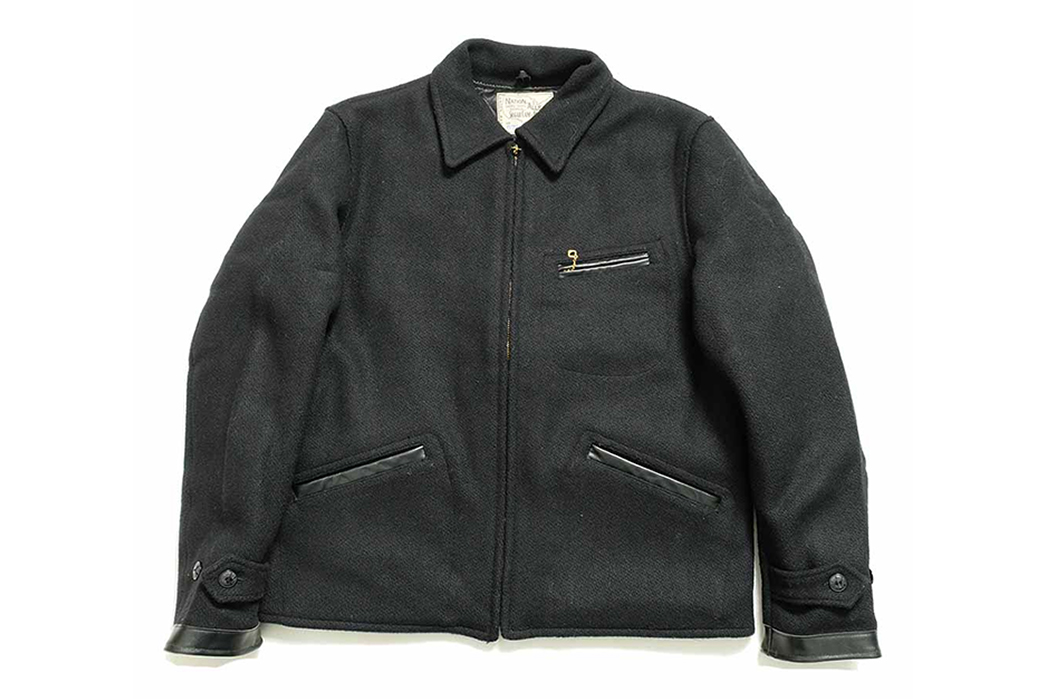
Sugar Cane 30 oz. Melton Wool Sports Jacket. Currently sold out at Hinoya.
Before World War II, there were many options for this style of jacket for men and boys. Some included vivid lattice knit patterns, jackknife pleats, dual color combinations, and leather/mouton combinations. Lee‘s “DURA-BILT” and Crown-Headligh’s “Breezkote” wool and leather combination jackets were released at this time. Many luxurious jackets were manufactured.

An example of the Wool/leather Sports Jacket made by Lee’s “Bilt Well” label, as mentioned by Fukutomi San. Image via Snug Snug.
J: Can you tell us more about how you work on collections with Mister Freedom? We found the Hooper collection lookbook with the cut-out faces of Steven McQueen and Burt Reynolds very amusing!
F: I leave the themes and designs to Christophe. He suggests what he wants to wear without being conscious of trends or marketing, so his ideas always inspire us. They excite me and I enjoy making the samples. Due to COVID-19, we’ve had fewer opportunities to meet face-to-face for business negotiations over the past few years, but each time we’ve managed to get the samples to the exhibition in time. When I don’t have time to ask the factory to produce a prototype, I sometimes use a sewing machine to make it myself!
J: Lastly, you recently released some more NOS Cone Denim goods – The 1967 jacket and jeans. It’s been a few years since the closure of White Oak, yet rolls of NOS Cone Denim still seem to pop up here and there. How hard is it to find deadstock Cone Mills White Oak Denim now?
F: This time, we were able to secure a sufficient amount of pre-shrunk denim deadstock Cone Mills denim, so we used it to produce the 1967 model jacket and jeans, which are made in the United States. Even if we do find a large amount, we don’t know how much of it will be usable unless we actually inspect it thoroughly. So, finding a roll of denim that will work for production is never easy.
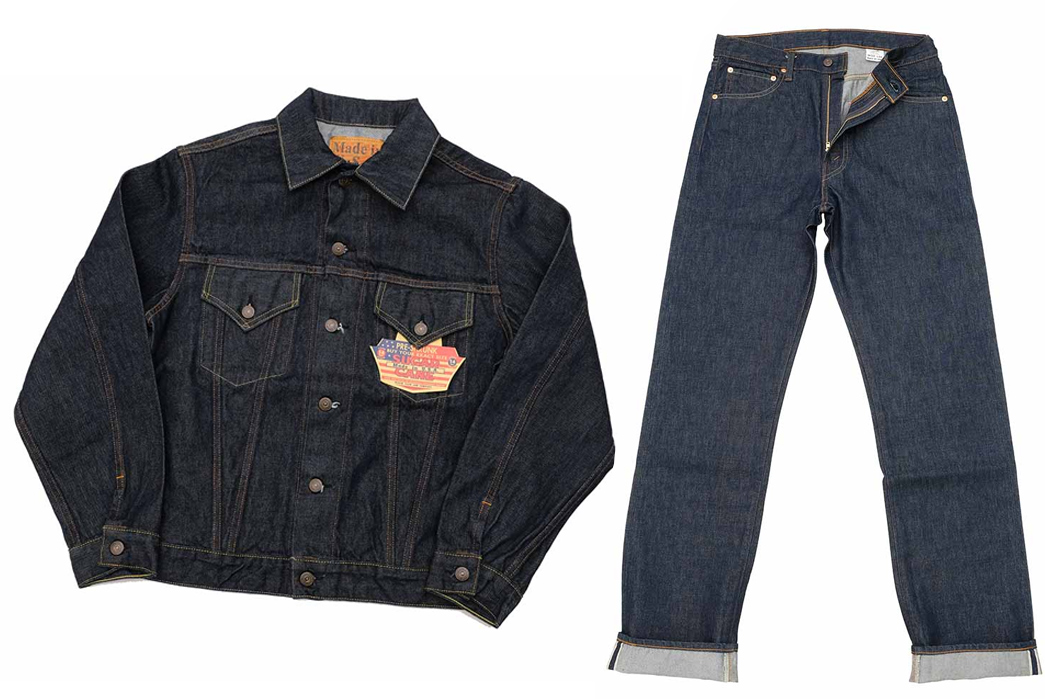
Sugar Cane 1967 Trucker Jacket and Jeans, both made in the USA from 14 oz. NOS Cone Mills Selvedge Denim. Available from $326 from Hinoya.
2nd quality deadstock denim can still be seen in large quantities, but the amount of 1st quality deadstock denim being discovered decreases year by year. I think the price will go up, so finding and using deadstock selvedge or Cone denim will become more and more difficult.
J: Thanks for taking the time to talk with us, Fukutomi San. We appreciate it a lot!
F: Thank you, James, for giving me this opportunity! There are projects in progress that cannot be announced yet, so please look out for them.



